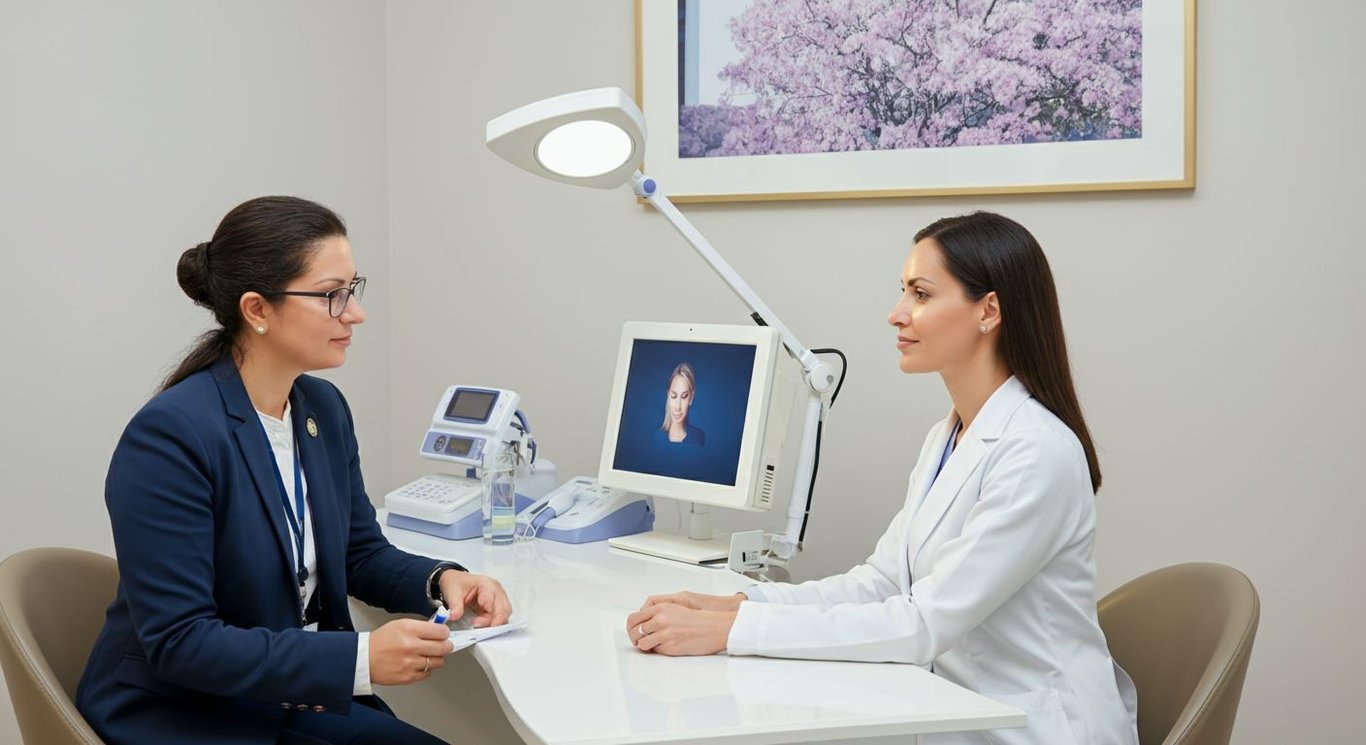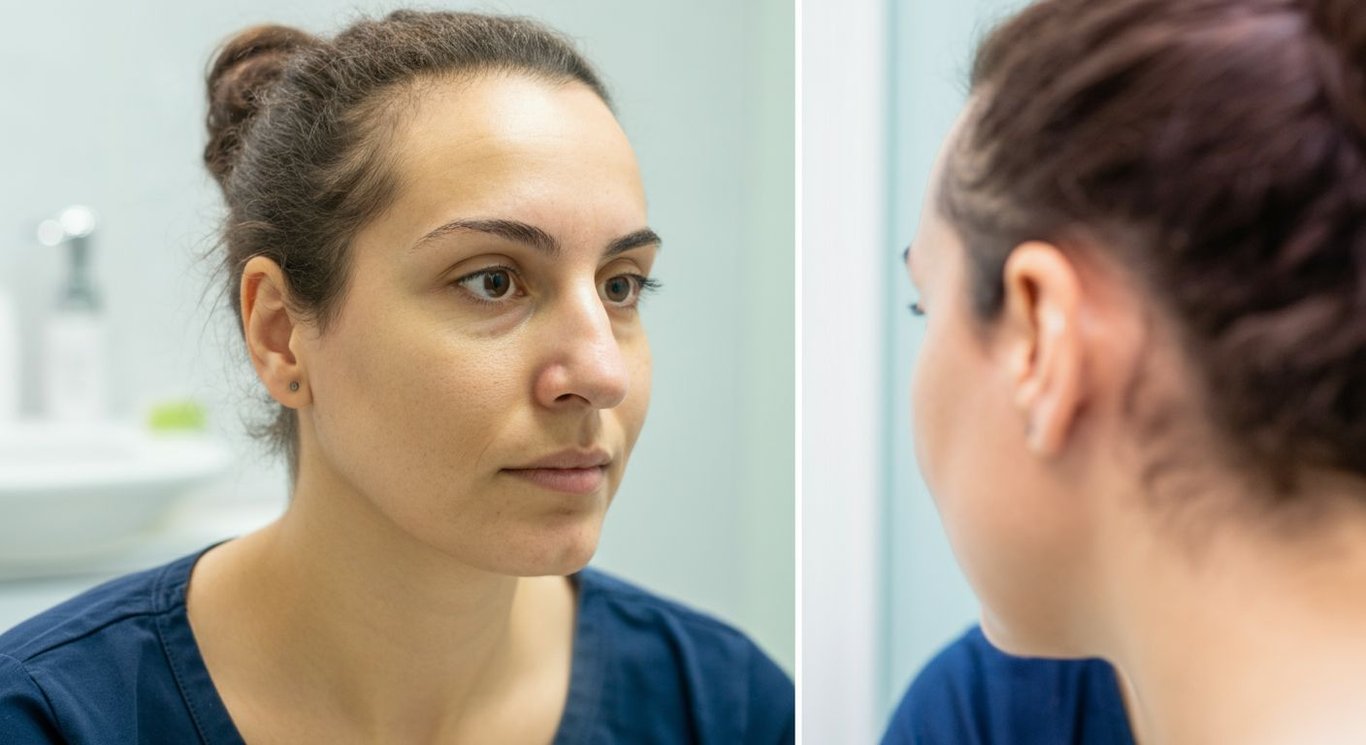Rhinoplasty Unveiled: Your Journey to Nasal Harmony
Embark on your journey to facial harmony with rhinoplasty, a customizable path to enhance both appearance and confidence.
Rhinoplasty, commonly referred to as a nose job, is not just a cosmetic endeavor; it is a journey towards achieving nasal harmony. With the capability to enhance facial symmetry and boost self-confidence, this surgical process is nuanced and tailored to individual needs. Whether you're contemplating a transformation for aesthetic reasons or to improve nasal function, understanding the basics of rhinoplasty is crucial. This article will guide you through every step, from the initial considerations to the transformative results seen in rhinoplasty before and after cases.
What is Rhinoplasty: Understanding the Basics of Nose Reshaping
Understanding Functional and Aesthetic Goals of Rhinoplasty
Rhinoplasty is a transformative procedure sought for both aesthetic and functional enhancements of the nose. The surgery involves reshaping nasal bone and cartilage to improve facial harmony or to correct structural issues that impair breathing. While many seek rhinoplasty to refine the size or shape of their nose, others require it to address breathing difficulties caused by a deviated septum or nasal trauma.
- Aesthetic Rhinoplasty: Aims to improve the nose's size, shape, and overall appearance to better complement facial features.
- Functional Rhinoplasty: Focuses on correcting structural abnormalities within the nose to improve breathing and nasal function.
- Combined Rhinoplasty: Integrates both aesthetic and functional corrections in a single surgical procedure for comprehensive results.
Surgical versus Non-Surgical Rhinoplasty Options
Modern rhinoplasty presents two primary approaches: surgical and non-surgical, each with distinct advantages and applications. Surgical rhinoplasty involves altering the underlying bone and cartilage to achieve significant and lasting changes. This method is ideal for individuals seeking substantial reshaping or functional corrections. In contrast, non-surgical rhinoplasty, often called liquid rhinoplasty, employs injectable fillers to make subtle adjustments to the nose's contour without surgery. It's best suited for minor enhancements and offers a temporary solution. Skilled surgeons carefully assess each patient to determine the most appropriate method, ensuring optimal outcomes that align with their specific needs and expectations.
- Surgical Rhinoplasty: Involves modifying bone and cartilage for significant changes and lasting results.
- Non-Surgical Rhinoplasty: Uses injectable fillers for subtle adjustments with no incisions.
- Personalized Assessment: Surgeons determine the best approach based on individual needs and desired outcomes.

Rhinoplasty Recovery Time: A Comprehensive Guide to Healing After Nasal Surgery
Navigating the Initial Days After Rhinoplasty
The period immediately following a rhinoplasty procedure is critical for ensuring proper healing and achieving the best possible outcome. Typically, patients spend the first 7-10 days focused on rest and recovery at home. During this time, it's common to experience swelling and bruising around the nose and eyes. However, with diligent care and adherence to your surgeon's instructions, these effects can be effectively managed and mitigated. A well-structured care plan, often provided by your surgeon, is indispensable. This plan typically includes guidance on managing swelling, using prescribed medications to alleviate discomfort, and potentially wearing a nasal splint to provide support to the newly reshaped nasal structure as it heals. Avoiding strenuous activities during this initial phase is crucial to promote optimal healing conditions and minimize the risk of complications such as increased swelling or bleeding.
- Rest and Limited Activity: Essential for reducing swelling and promoting healing during the first week.
- Medication Management: Following the prescribed medication schedule helps control pain and prevent infection.
- Nasal Splint Care: Maintain the splint as directed by your surgeon to stabilize the nose during the initial healing phase after nose surgery.
Returning to Normal Activities and Long-Term Healing
While the initial recovery period is focused on managing immediate post-operative effects, the subsequent weeks involve a gradual return to normal life. Most patients find they can resume light activities, such as returning to work or school, about two weeks after their rhinoplasty. However, it's essential to avoid more strenuous physical activities, like heavy lifting or intense exercise, for at least four to six weeks to prevent complications and ensure optimal healing. Complete healing and the final refinement of the nose's shape can take several months to a year. During this time, it’s important to attend all follow-up appointments with your surgeon to monitor progress and address any concerns. Regular check-ups allow for early detection and management of any potential issues, ensuring a successful outcome for your rhinoplasty procedure. By carefully following your surgeon's recommendations and being patient throughout the healing process, you can achieve the desired aesthetic and functional results from your nasal surgery. For example, Estetica Health Group offers comprehensive post-operative support to guide patients through each stage of recovery, ensuring a comfortable and successful healing journey after rhinoplasty.
- Gentle Resumption: Gradual return to daily activities after two weeks.
- Physical Activity Restrictions: Avoid strenuous exercise for four to six weeks after contacting Estetica.
- Long-Term Monitoring: Attend all follow-up appointments for proper healing and care.

Surgical vs. Non-Surgical Rhinoplasty: Exploring Your Options for Nasal Enhancement
Ideal Candidates for Surgical Rhinoplasty and Expected Outcomes
Surgical rhinoplasty is best suited for individuals requiring significant nasal reshaping or functional corrections, offering a permanent solution to structural nasal issues. Candidates often include those with severely deviated septums causing breathing problems, or those seeking substantial alterations to nasal size or shape for enhanced facial harmony. This comprehensive approach allows surgeons to address complex nasal deformities with precision, providing results that are both aesthetically pleasing and functionally beneficial. The procedure involves carefully reshaping the nasal bones and cartilage to achieve the desired outcome, ensuring long-term satisfaction for suitable patients. Achieving optimal results necessitates selecting a highly skilled surgeon and adhering to a detailed surgical plan tailored to each patient's unique anatomy and aesthetic goals.
- Significant Reshaping: Ideal for those needing substantial changes to nasal structure.
- Functional Correction: Addresses breathing issues by correcting deviated septums.
- Permanent Results: Provides lasting alterations to nasal appearance and function through nose surgery.
Non-Surgical Rhinoplasty: Benefits, Limitations, and the Procedure
Non-surgical rhinoplasty, involves the use of dermal fillers to refine the shape of the nose without invasive surgery, presenting a minimally invasive option for enhancing nasal contours. Often referred to as liquid rhinoplasty, this method is particularly effective for smoothing out minor bumps or subtly lifting the nasal tip. The procedure is attractive to those seeking immediate results with little to no downtime, allowing patients to return to their daily activities almost immediately. Although the results are temporary, lasting from several months to a couple of years, non-surgical rhinoplasty offers a reversible solution, making it a great choice for individuals who are unsure about committing to permanent surgical changes. In fact, in some cases, the use of meticulous injection techniques can achieve a more balanced and harmonious nasal appearance, enhancing overall facial aesthetics with fillers.
- Minimal Downtime: Quick recovery allows for immediate return to daily activities.
- Reversible Results: Temporary alterations provide flexibility for those hesitant about permanent changes.
- Subtle Enhancements: Ideal for smoothing minor imperfections and refining nasal contours with nose job.

Rhinoplasty Before and After: Witnessing the Transformative Power of Nasal Reconstruction
Understanding the Role of Before and After Photos in Rhinoplasty Consultations
Before and after photos are indispensable in the rhinoplasty consultation process, offering prospective patients a tangible preview of potential results. These images provide a clear visual representation of the changes that can be achieved through rhinoplasty, aiding in setting realistic expectations. By viewing a diverse array of cases, patients can better understand the nuances of nasal reshaping and how it relates to their unique facial structure. It allows for an open dialogue between the patient and surgeon, ensuring alignment on aesthetic goals and surgical possibilities. The use of before and after photos also highlights the surgeon's skill and aesthetic sensibility, providing assurance and building trust. Many patients report feeling more confident and informed about their decision after reviewing these visual examples, making it a fundamental part of a thorough consultation process.
- Visualizing Potential Outcomes: Provides a clear picture of possible results from nose job.
- Setting Realistic Expectations: Helps patients understand what can be realistically achieved.
- Enhancing Communication: Facilitates better understanding and alignment between patient and surgeon.
The Psychological Benefits of Rhinoplasty and Enhanced Self-Confidence
Beyond the physical transformations, rhinoplasty offers significant psychological benefits, boosting self-esteem and improving overall quality of life. Patients often report a heightened sense of self-confidence and satisfaction with their appearance post-surgery. Addressing long-standing insecurities about nasal aesthetics can lead to improved social interactions and a more positive self-image. The renewed confidence extends beyond personal appearance, influencing professional and personal relationships. For instance, individuals who felt self-conscious about their nose may find themselves more willing to participate in social activities and pursue new opportunities. The artistry of skilled surgeons plays a crucial role in maintaining the natural appearance and functionality of the nose. By carefully remodeling the nose to harmonize with other facial features, surgeons contribute to a balanced and attractive look, enhancing patient satisfaction and psychological well-being. Estetica Health Group integrates psychological support into the recovery process, recognizing the importance of mental and emotional well-being alongside physical healing after nasal surgery.
- Improved Self-Esteem: Correcting perceived flaws enhances overall confidence.
- Enhanced Social Interaction: Increased willingness to engage in social and professional activities.
- Positive Self-Image: A more favorable perception of one's appearance and self-worth.
Precision Nasal Reshaping via Surgical and Non-Surgical Rhinoplasty for Aesthetic and Functional Enhancement
Personalized Rhinoplasty Journey: From Initial Consultation to Long-Term Follow-Up Care
Frequently Asked Questions
What is rhinoplasty and who is a good candidate for nose surgery?
How long does rhinoplasty recovery time typically take, and what can I expect?
What are the differences between surgical and non-surgical rhinoplasty?
What psychological benefits can rhinoplasty offer, beyond physical changes?
Achieve your aesthetic goals with estethica's expert guidance.
📞 Call Now for a Free Consultation!